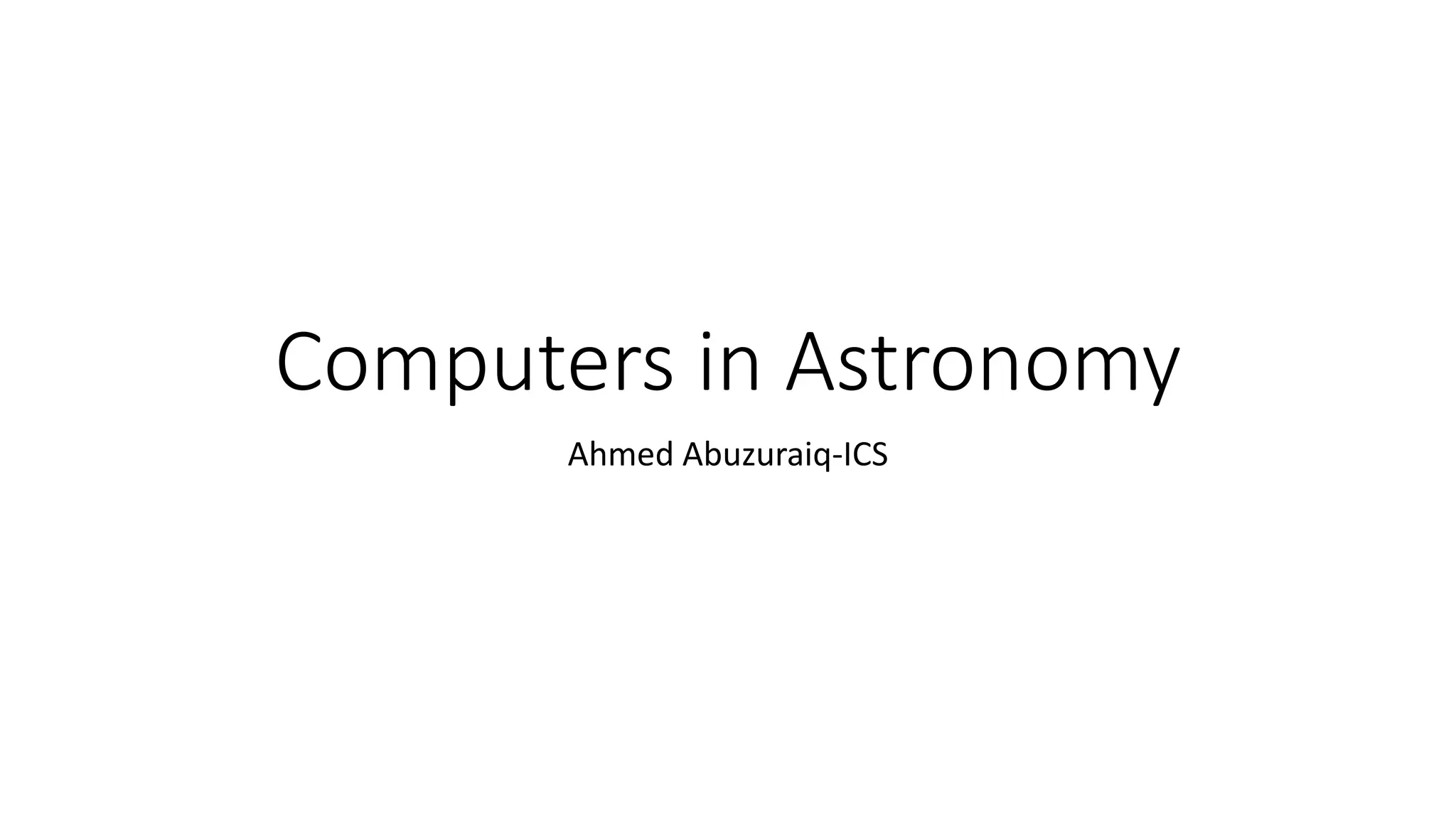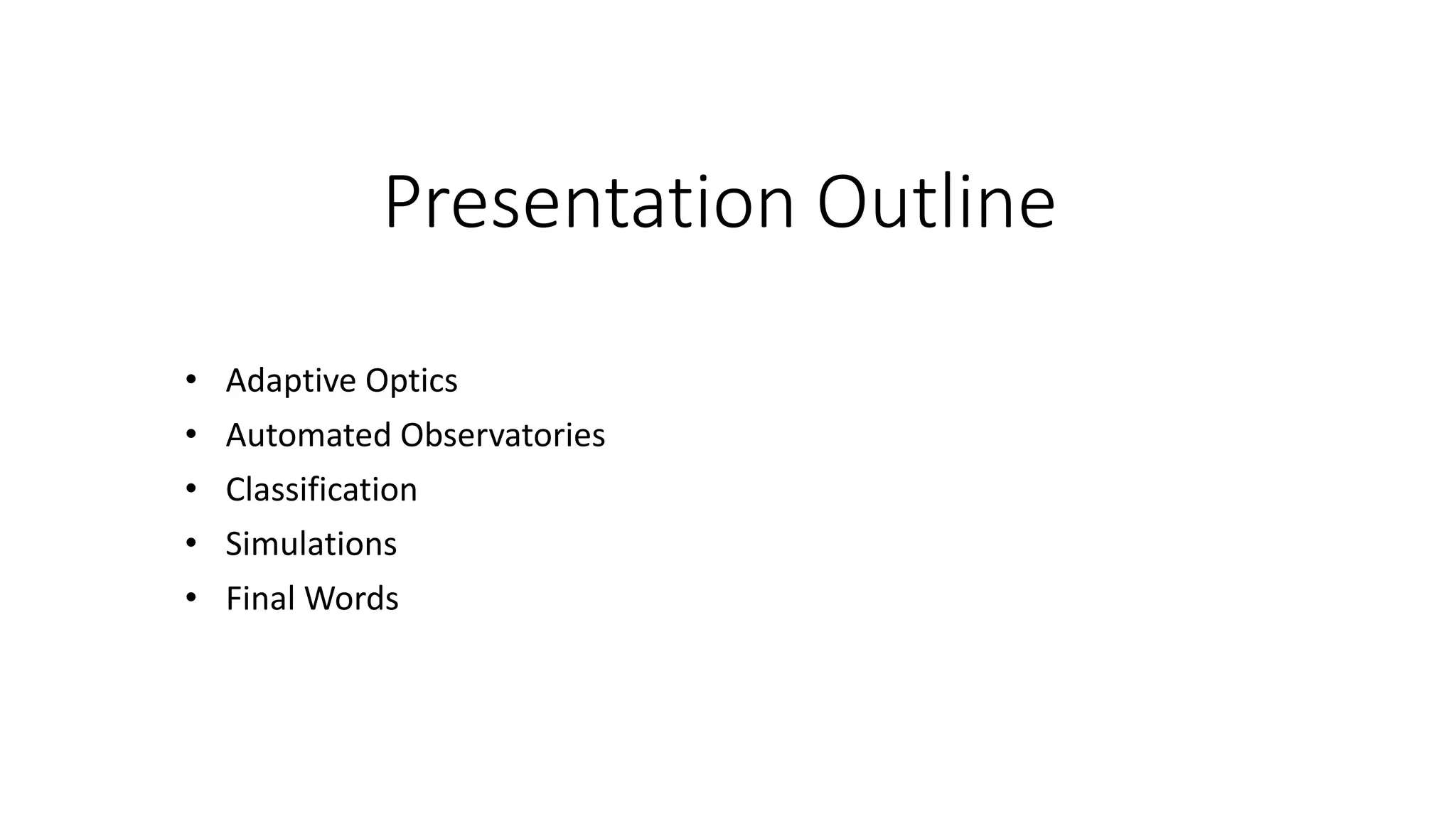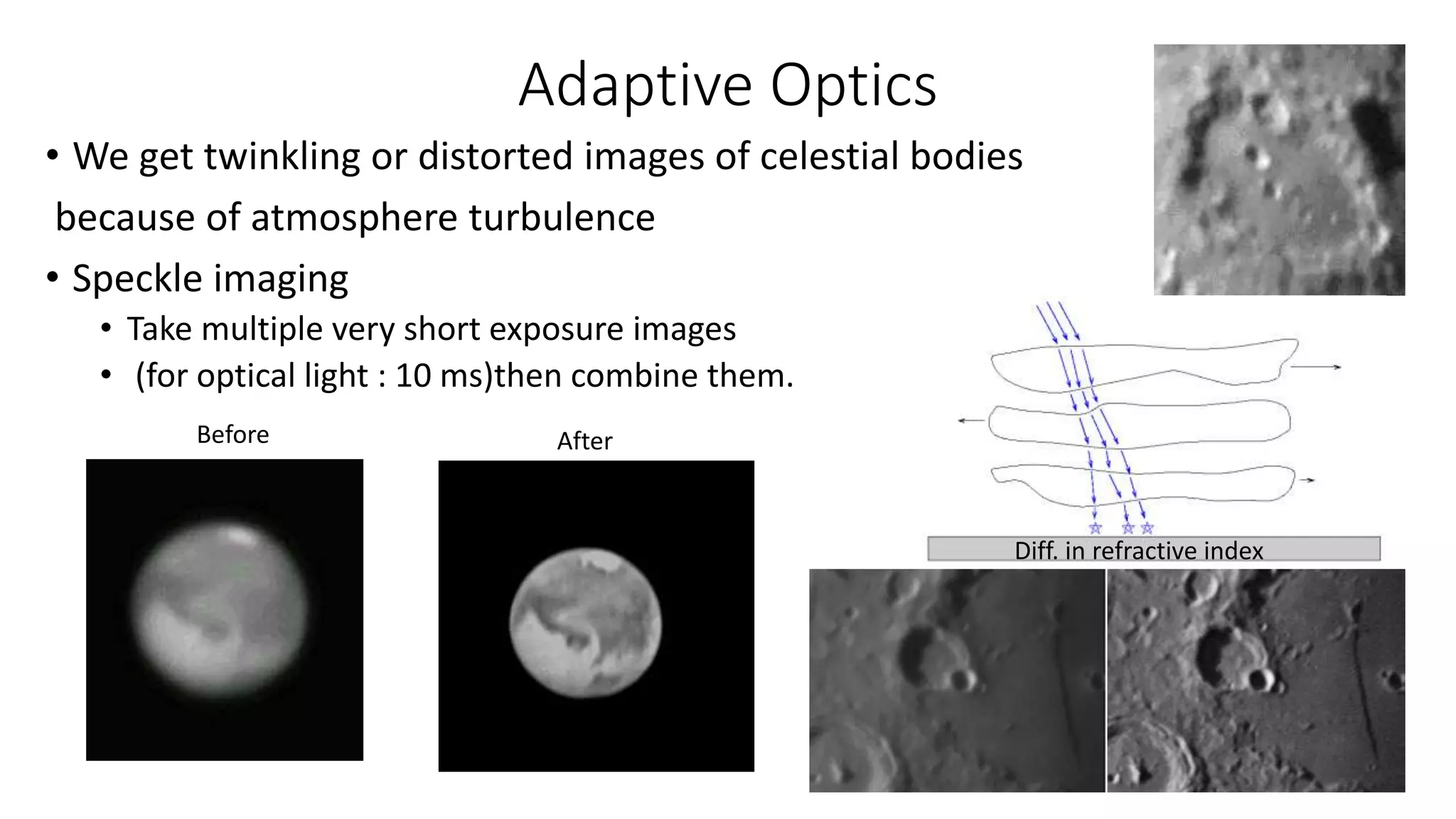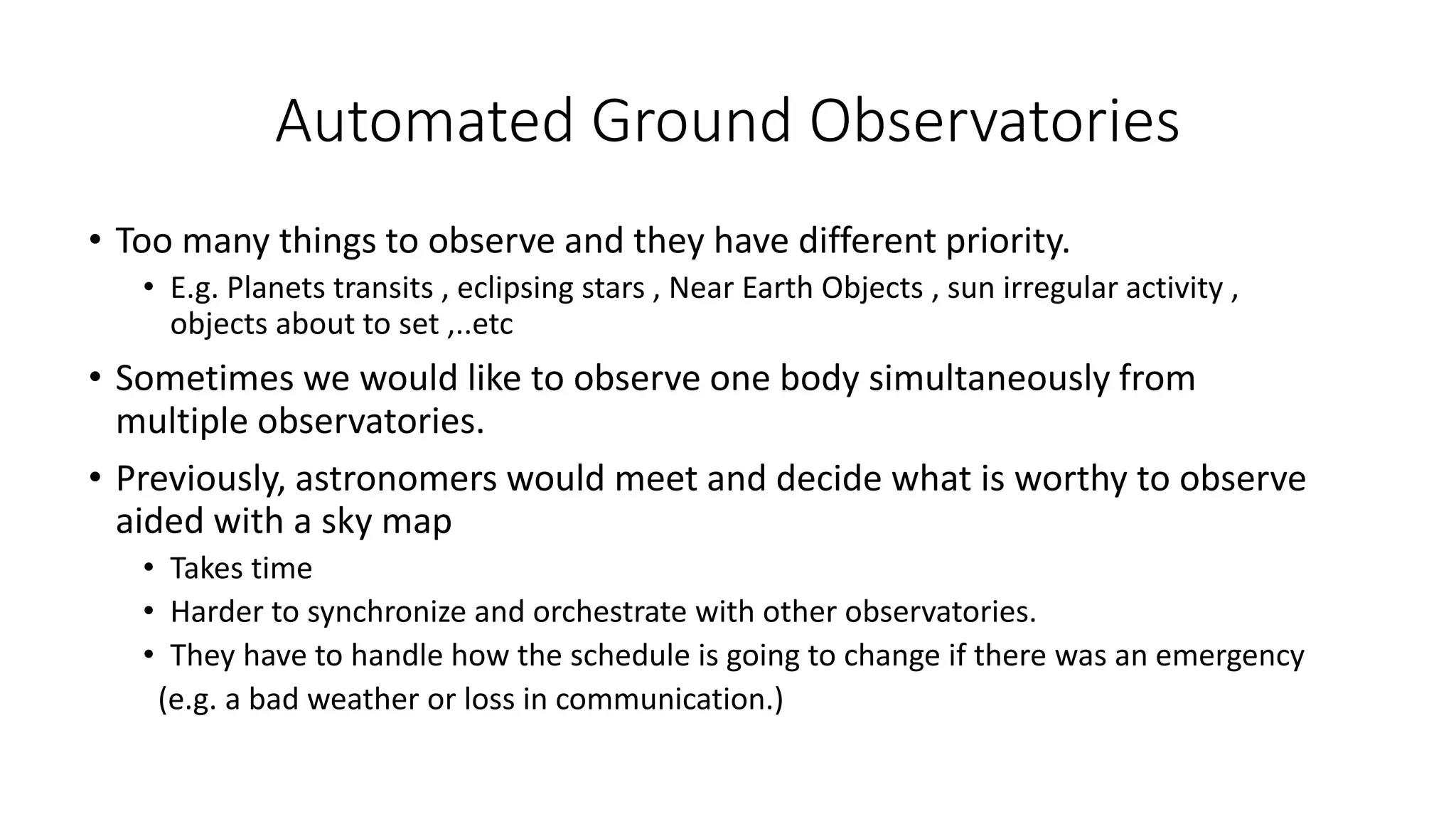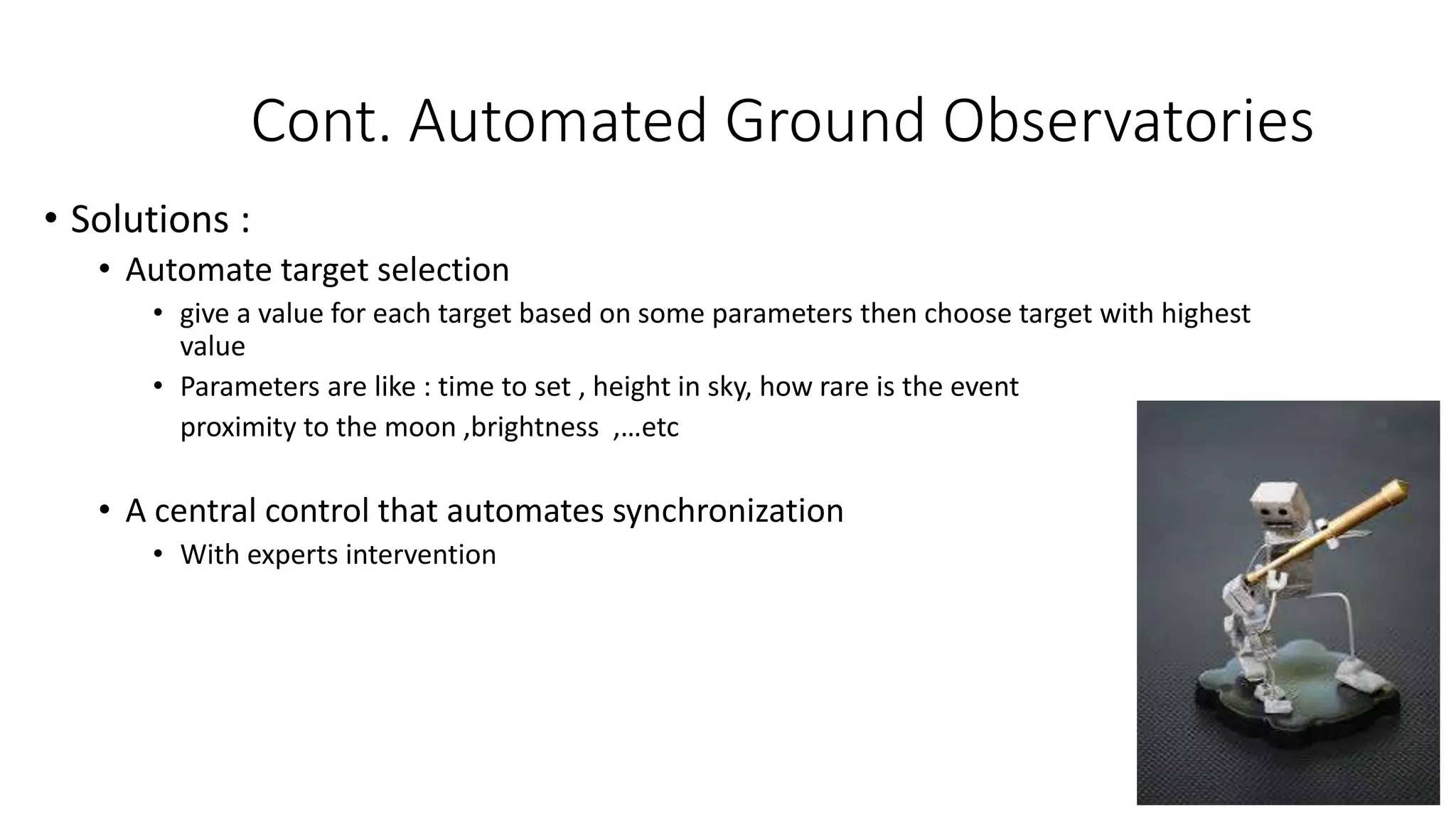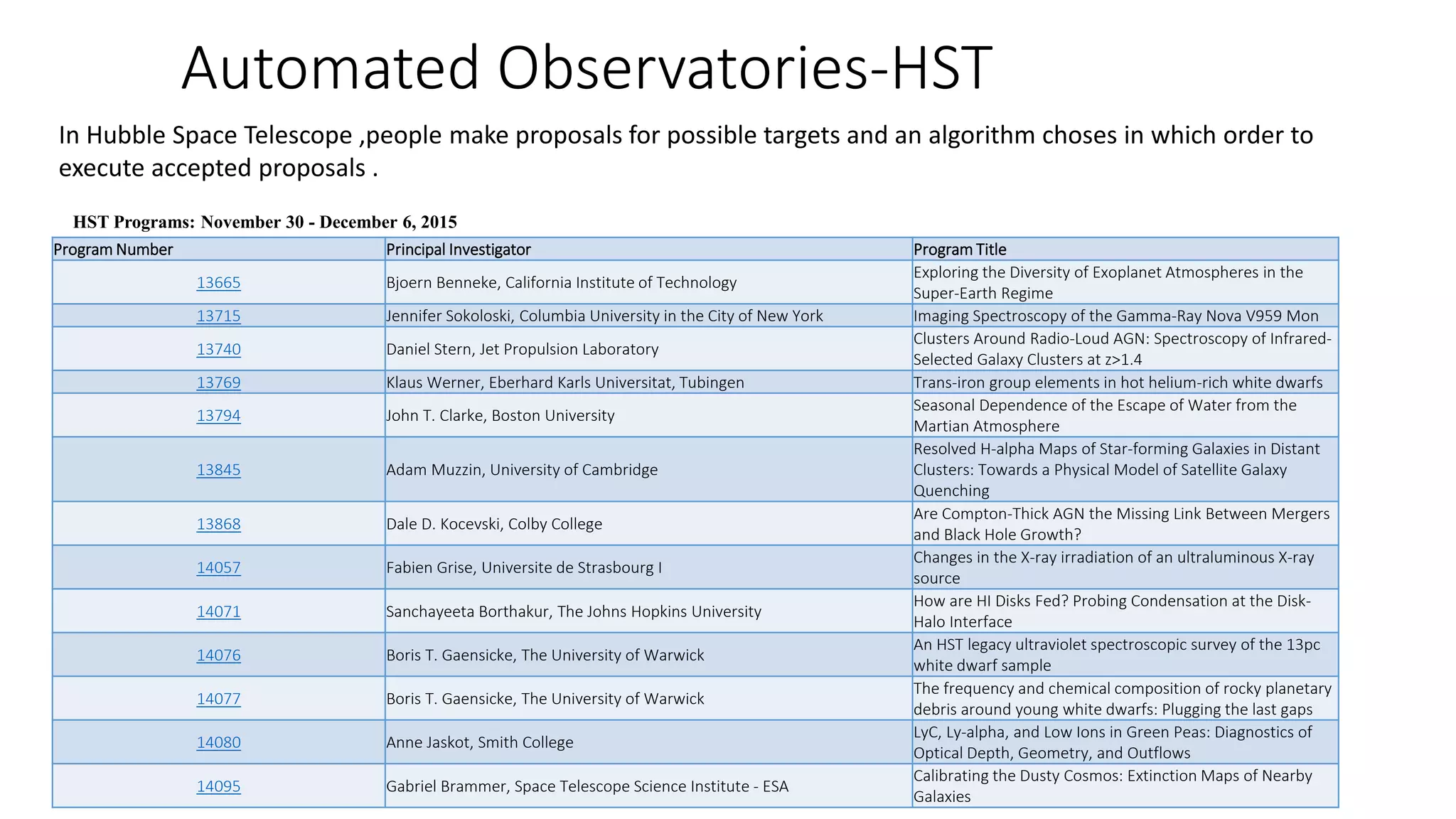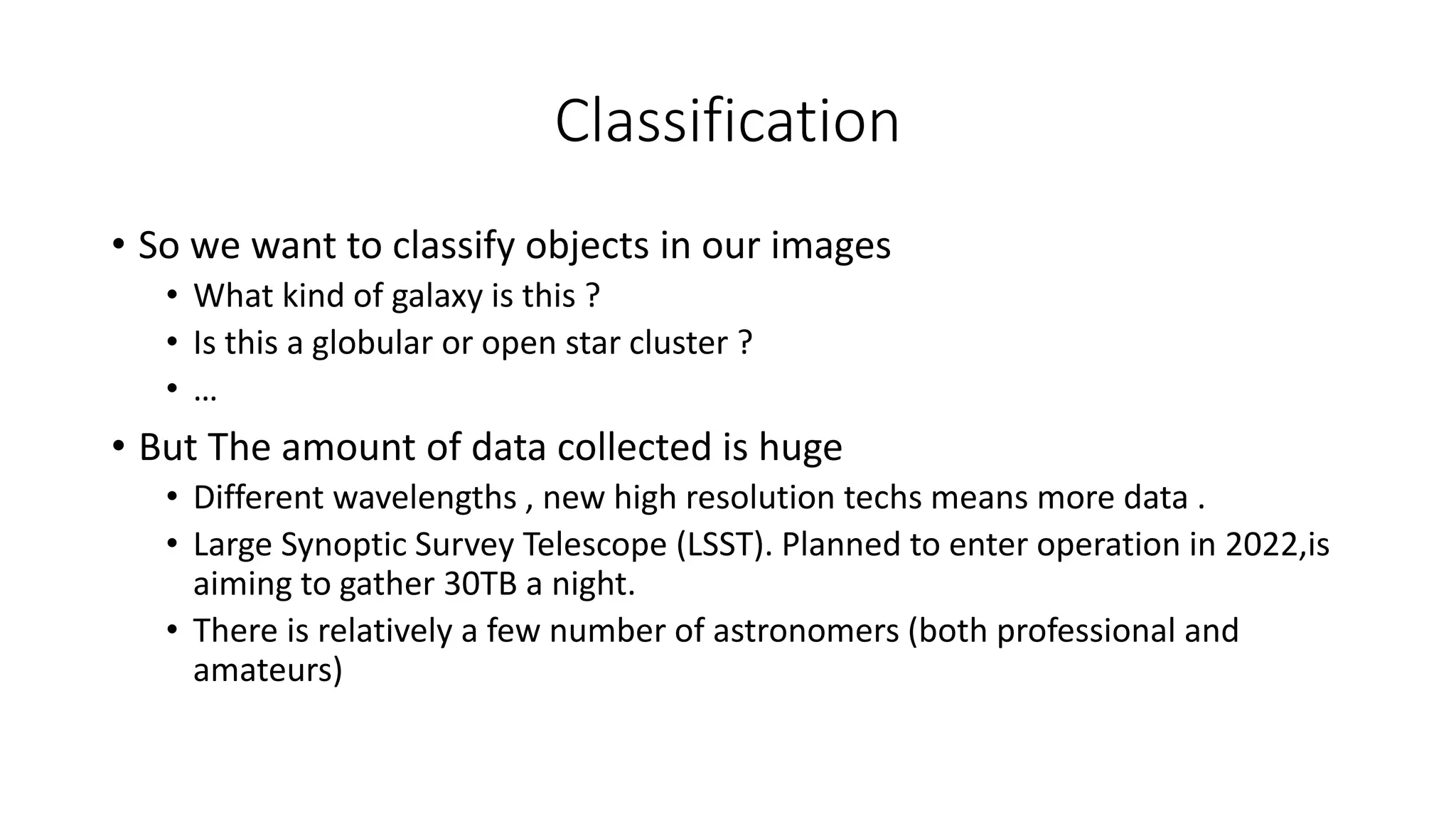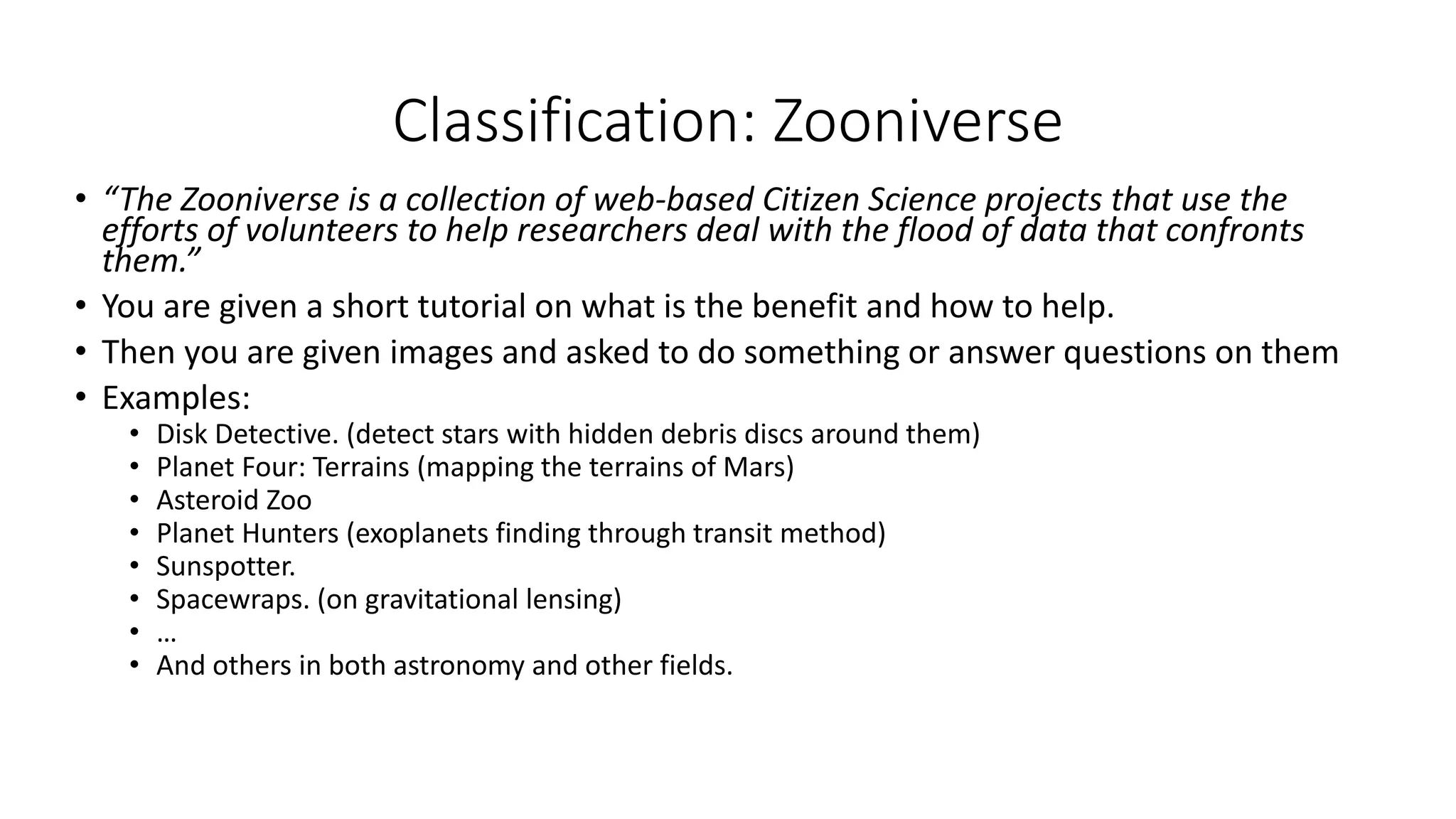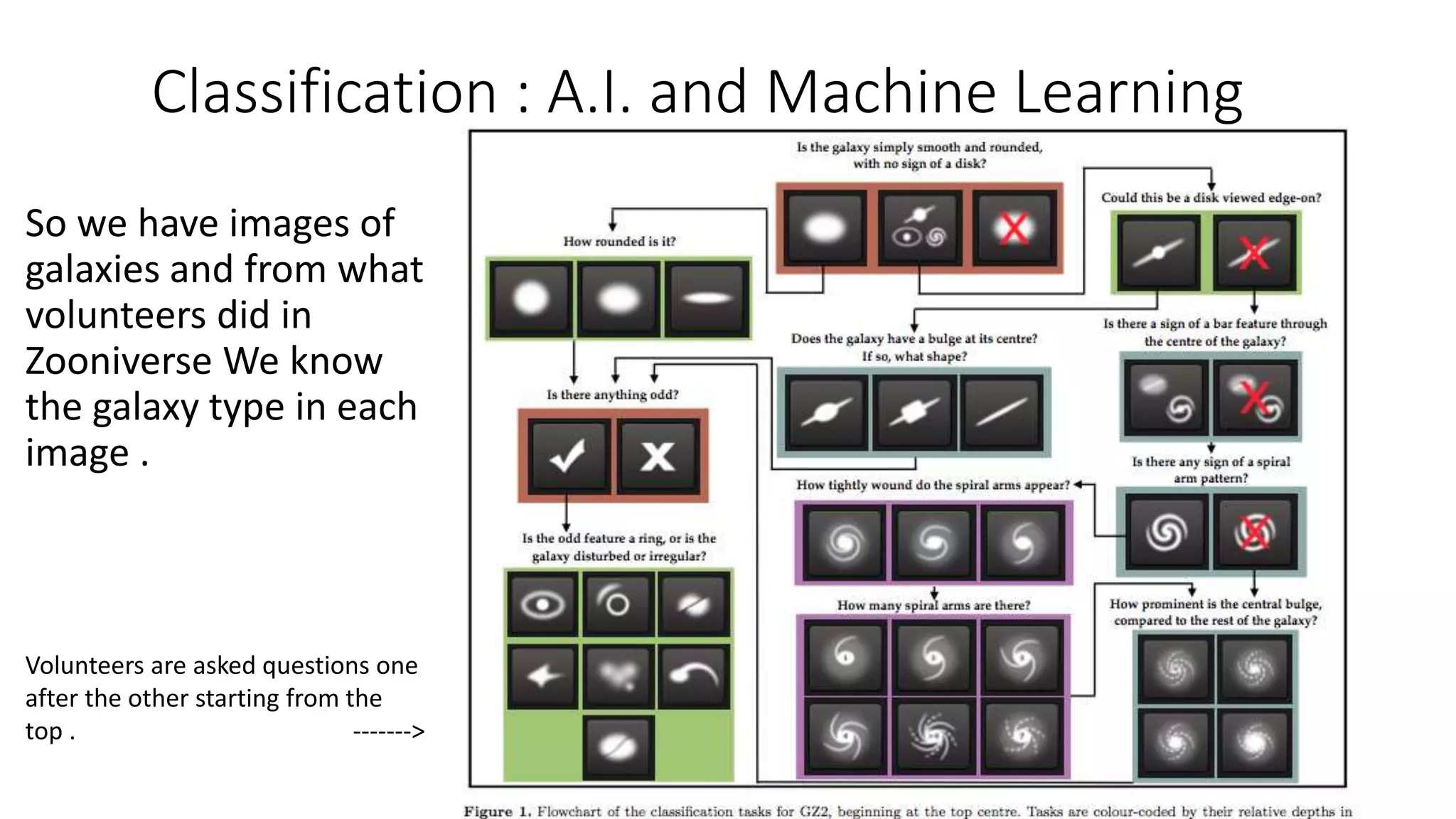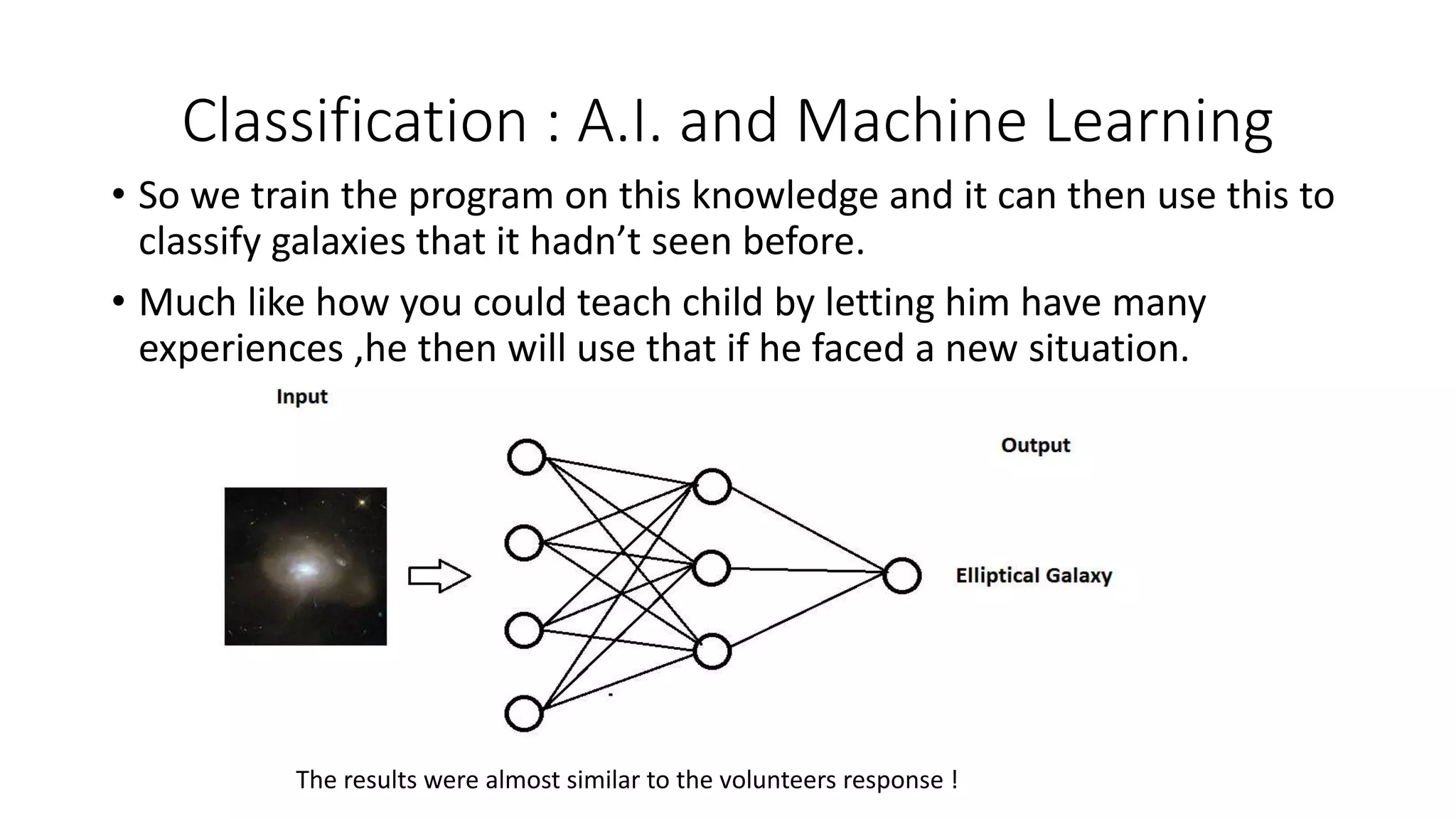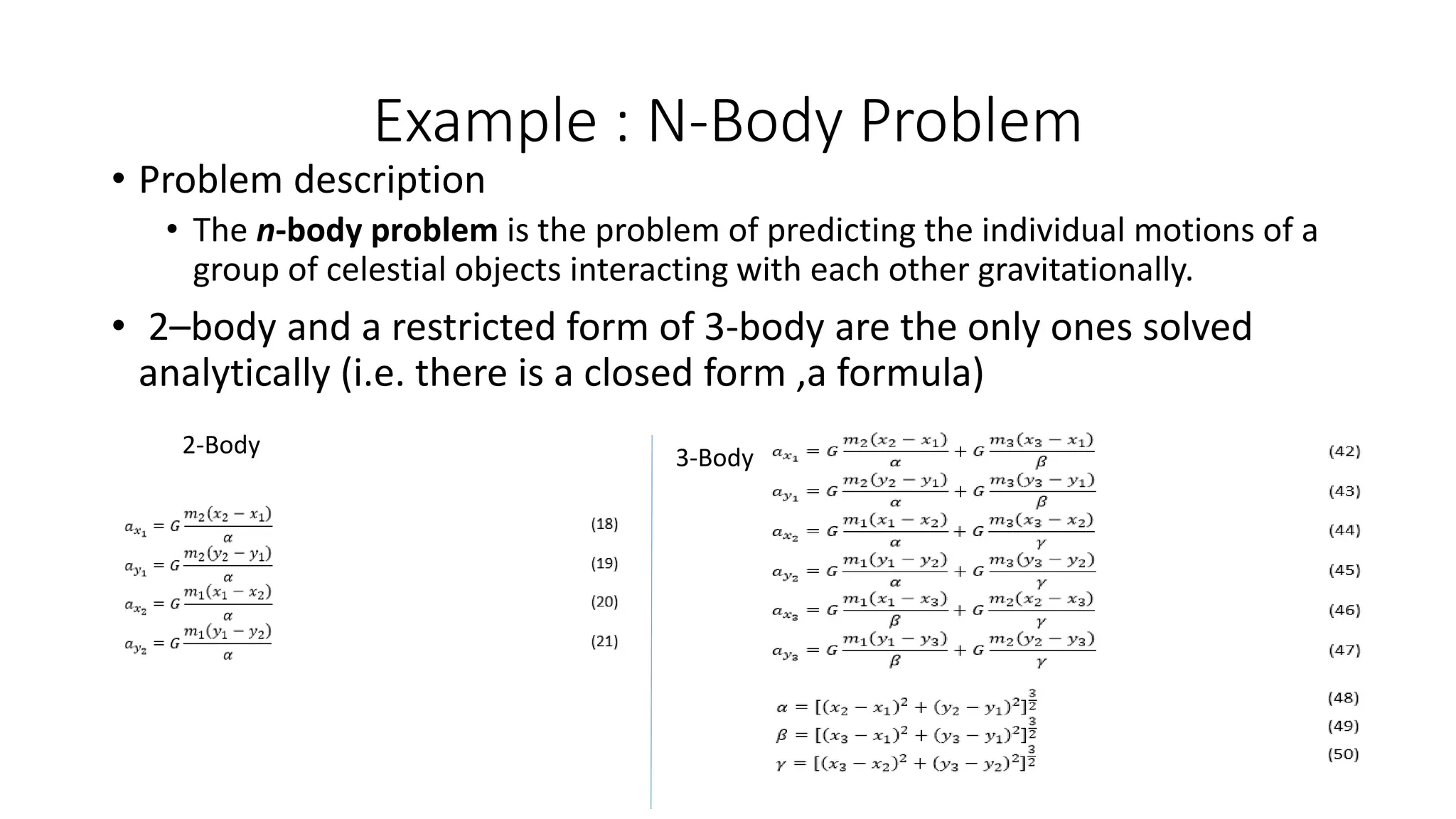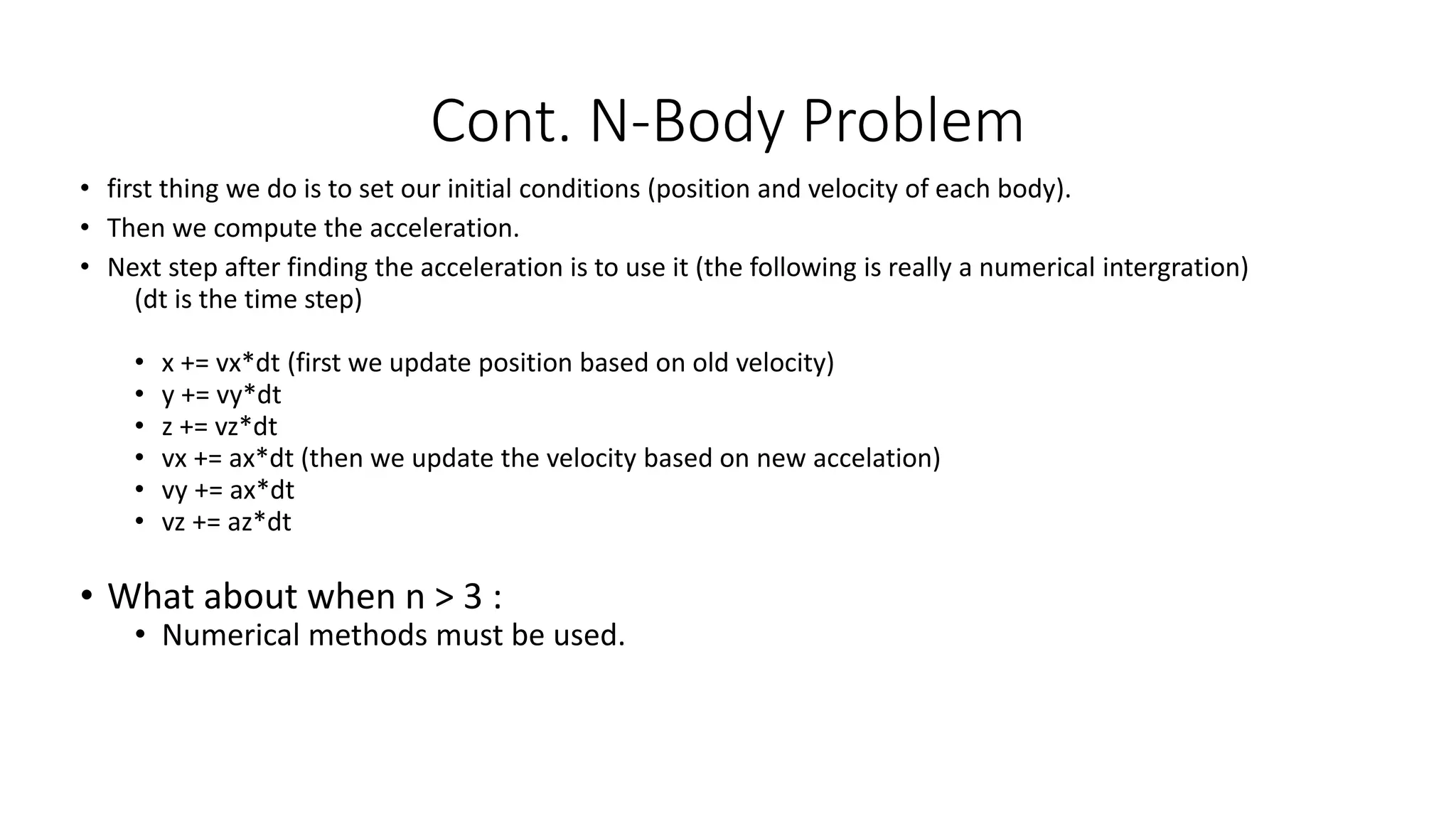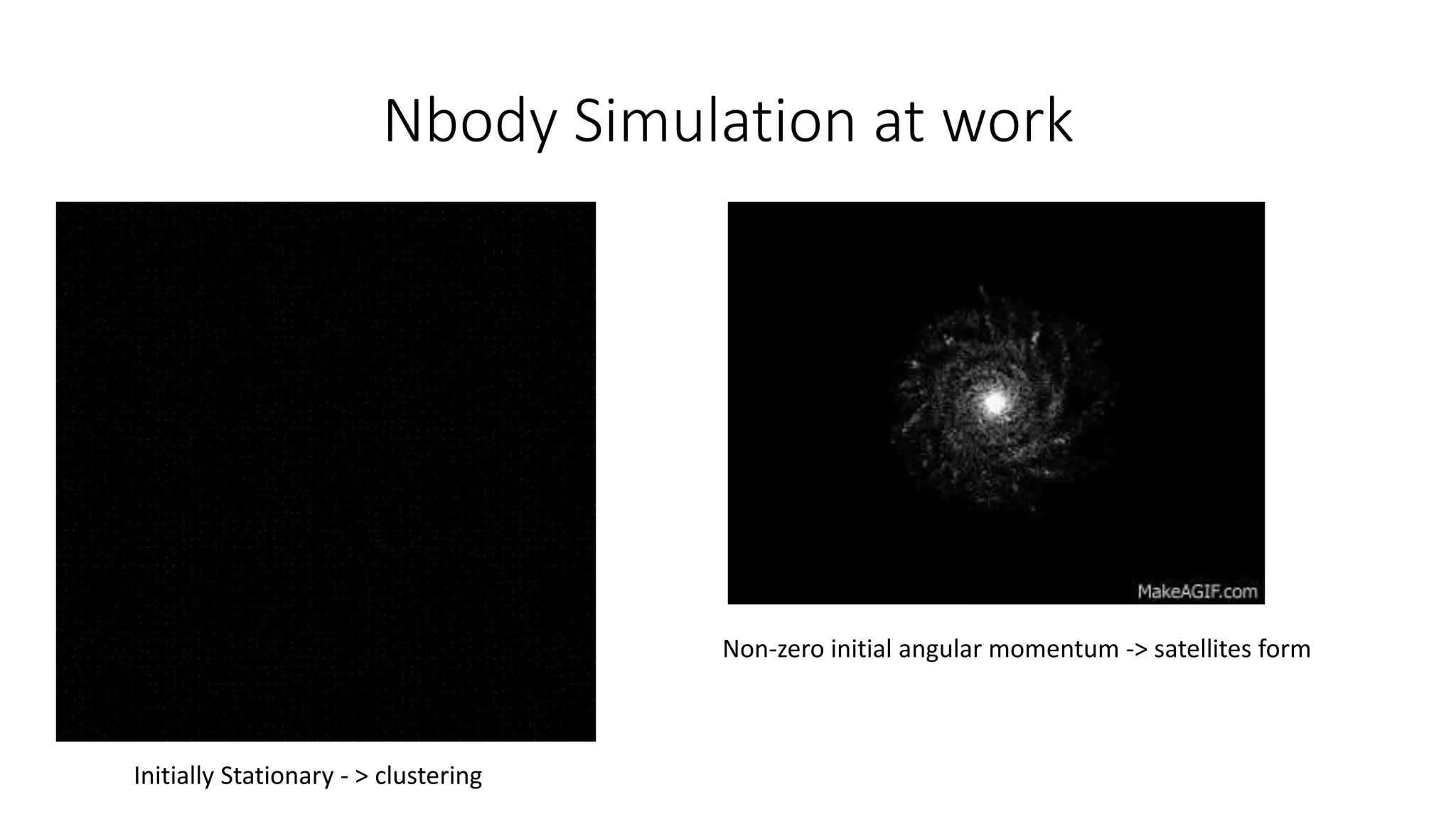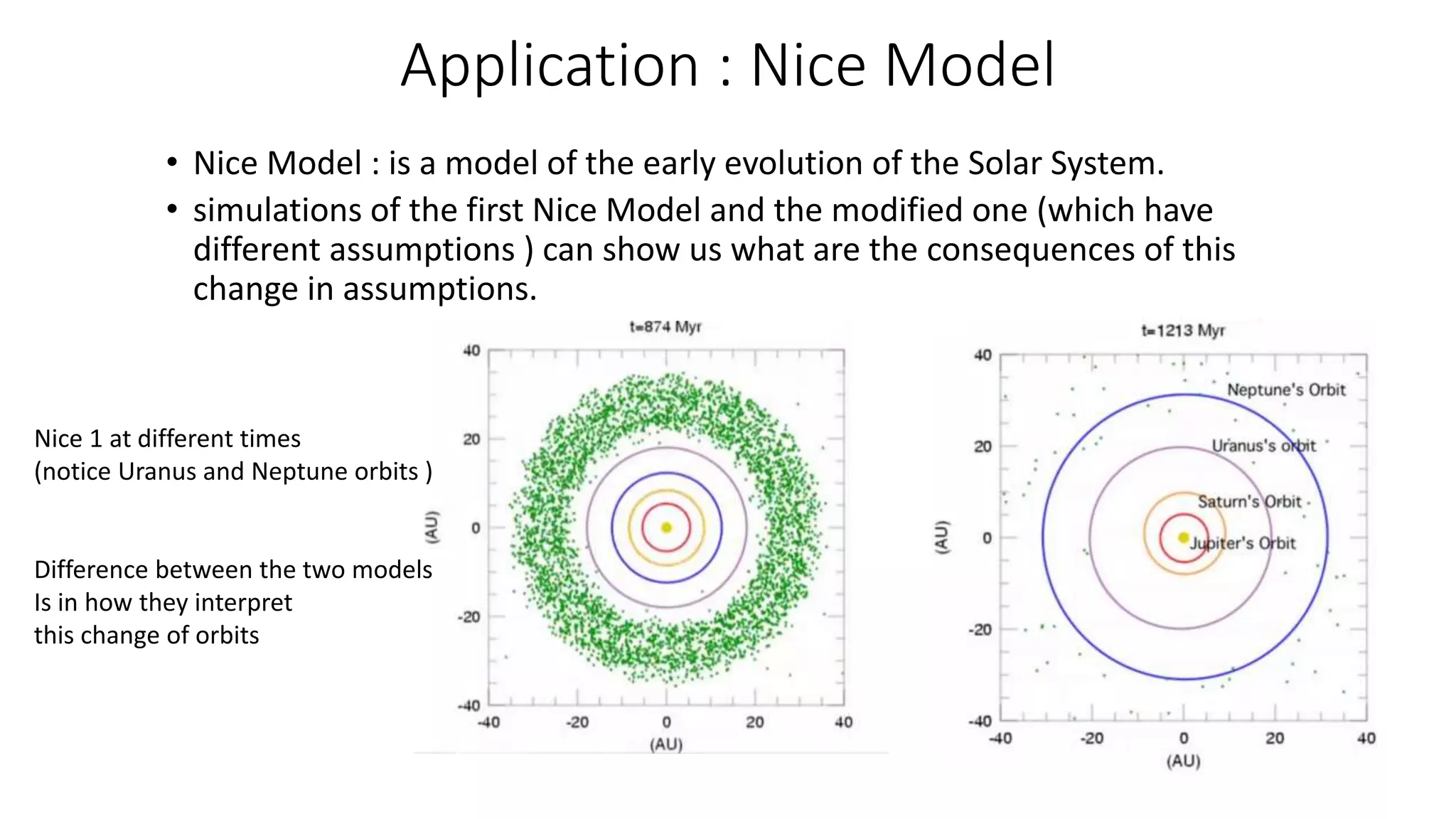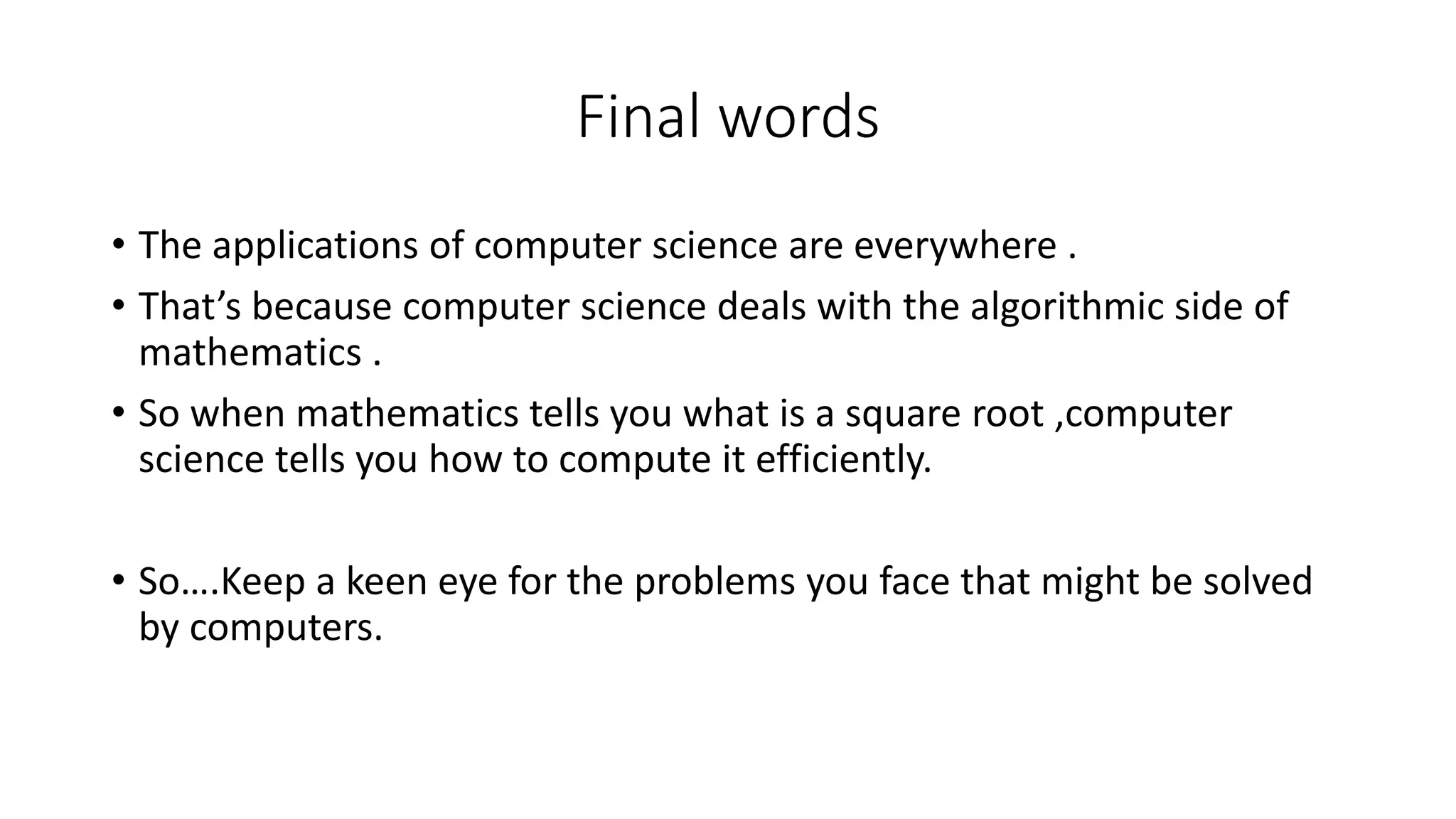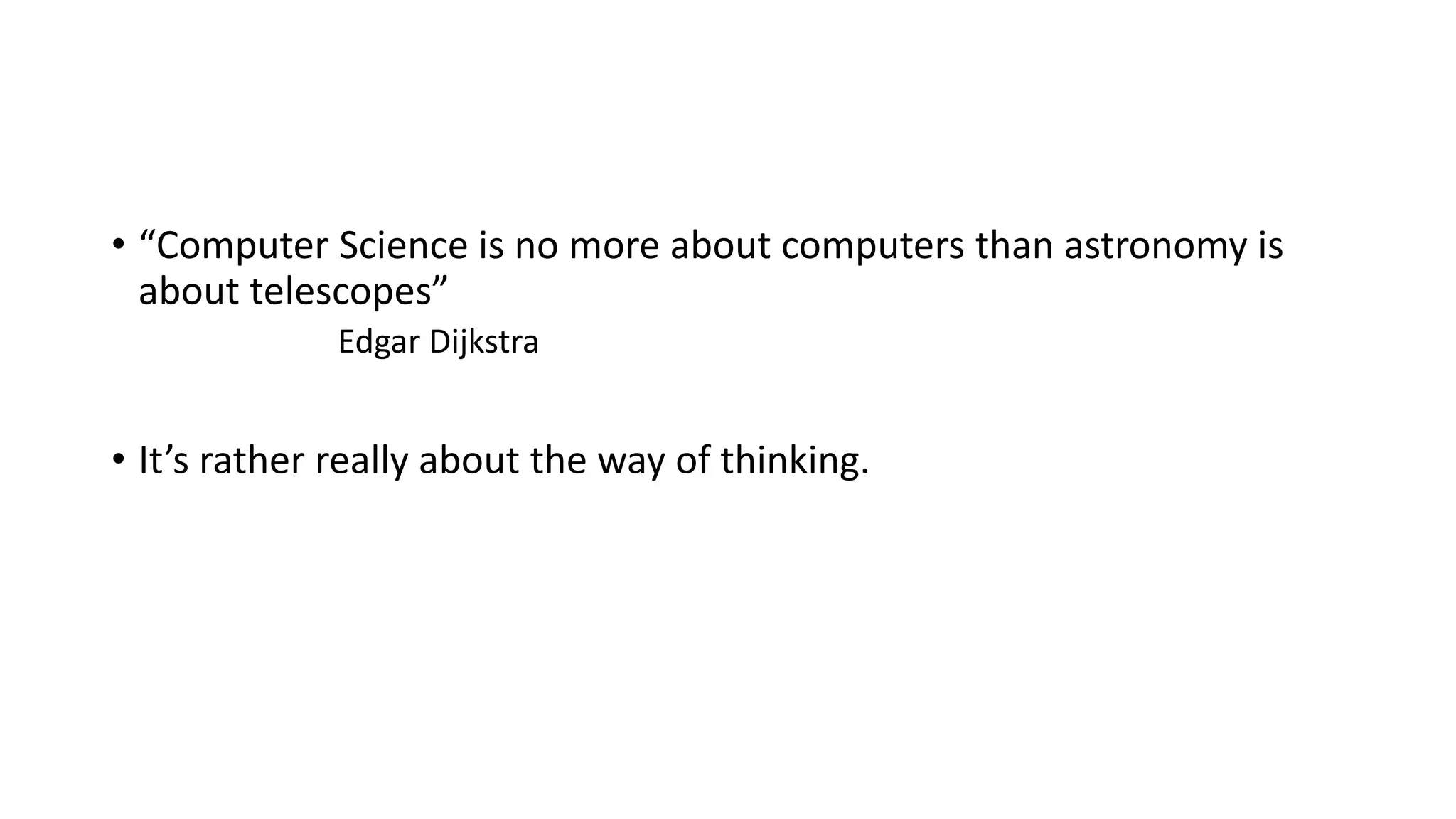In the document, the following points are made about the use of computers in astronomy:
1) Automated observatories like the Hubble Space Telescope use algorithms to select targets and schedule observations in order to efficiently observe many astronomical objects.
2) Citizen science projects like Zooniverse classify large amounts of astronomical data by crowdsourcing classifications to volunteers in order to help researchers study more data than possible otherwise.
3) Simulations of astronomical phenomena that are difficult to observe like stellar collisions are used to study and confirm hypotheses, with simulations becoming more accurate as computational capabilities increase.
